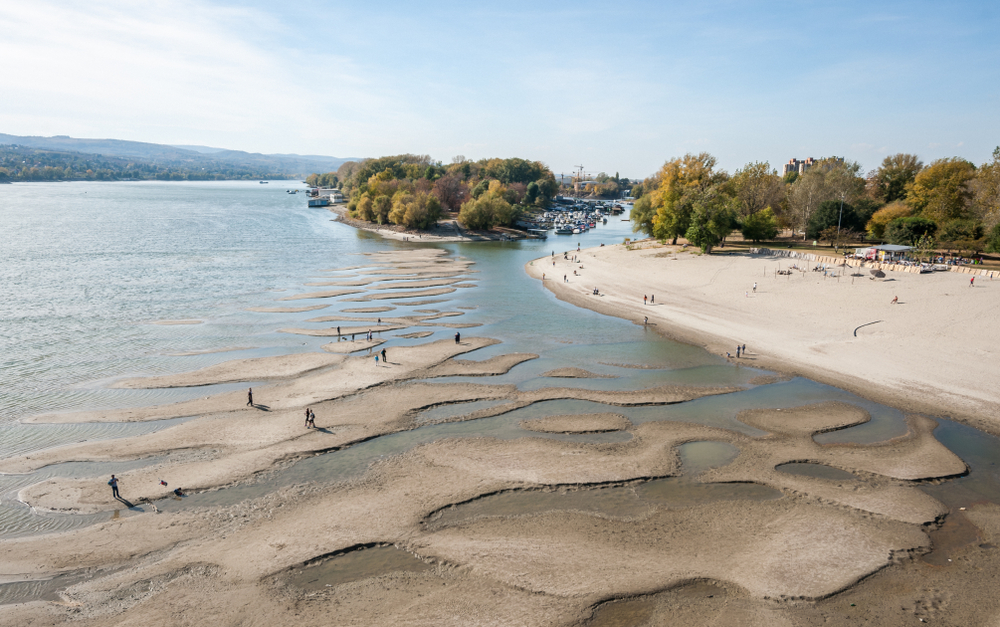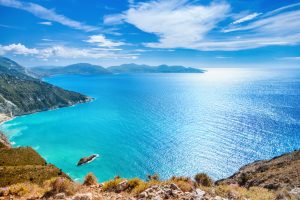A tide is defined as the alternate rising and falling of sea levels, and while most large bodies of water experience this somewhat mysterious phenomenon, the severity of tidal ranges varies immensely. Tidal highs and lows can be caused by many factors, including geography, the shape of a coastline, the location of the sun and moon, and even the presence of large storm systems.
While high tides can be found all around the world, some tidal systems really stand out against others. The following five, high-tide locations are characterized by their unique geography, which has resulted in the funneling of a large oceanic body of water in and out of the surrounding coastline. Continue reading to discover the 5 locations with the highest tides in the world.
Table of Contents
1. Bay of Fundy, Nova Scotia
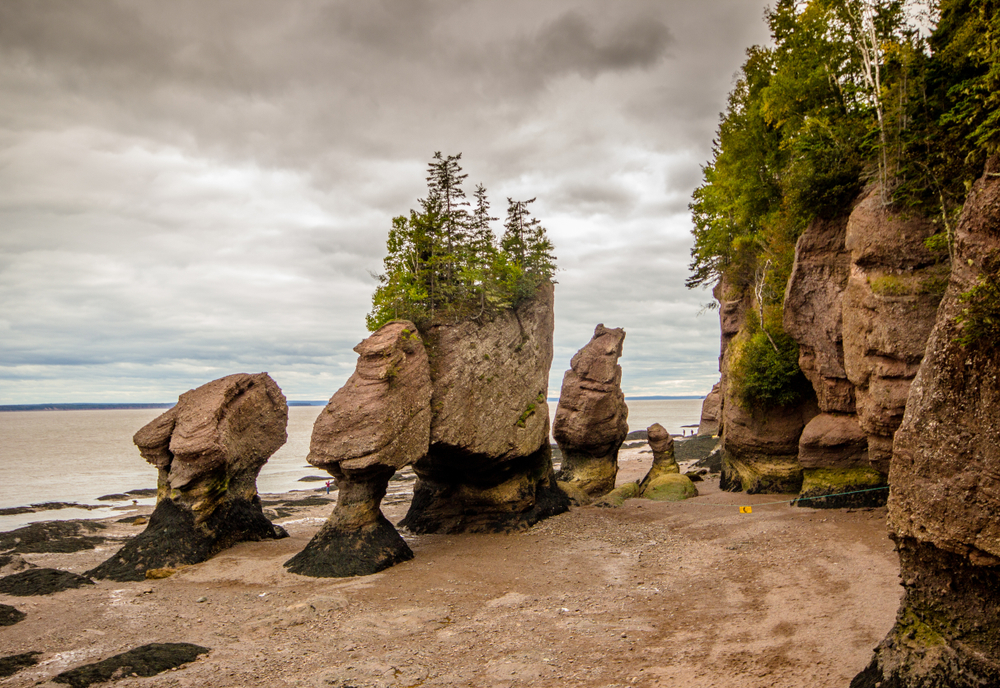
Coming in at number one for the highest tide in the world is the Bay of Fundy, located along the western coast of Nova Scotia, Canada. The northeastern part of the bay, Burncoat Head, has the record for the highest average tidal range in the world, measuring 38.4 feet (or 11.7 meters).
Geography plays a big part in making this the highest tide in the world. The bay is located at the northwestern tip of the Atlantic Ocean, and the sun and moon create a gravitational pull that draws in massive amounts of water towards the nearby land. As the water approaches the continent, it is raised even higher as it encounters the Grand Banks – a large plateau that allows the water to heap on top of itself at an even higher rate.
As this enormous water mass continues towards the shore, it is funneled in through the narrow Bay of Fundy until it is trapped between Canada’s mainland and the peninsula of Nova Scotia.
As we mentioned above, storms can have a big effect on tidal activity, and in 1869, a tropical storm aided the tide to reach its highest level yet, an astounding 70.9 feet (or 21.6 meters)!
2. Ungava Bay, Quebec
Canada claims the second-highest tide as well as the first, this time in Quebec’s Ungava Bay. This bay is situated in the northeastern part of the country at the confluence of Hudson Bay, Baffin Bay, and the Labrador Sea. While many believe that Ungava Bay is connected to the Atlantic Ocean, this body of water is actually fed by the Arctic Ocean.
Leaf Lake of Ungava Bay boasts the highest tidal activity, with a mean height of 32 feet (or 9.8 meters). Some researchers suggest that the tidal activity in this area can even reach up to 56 feet (or 17 meters) during the spring when the tide is at its peak.
The high tides of Ungava Bay are mostly caused by the combination of the shallow depth of the bay and the funneling effect of the local geography. Attempts have been made to harness this tidal power as a renewable energy source, but the harsh environment and cold temperatures of the area often leave the bay frozen over and therefore make it impossible to tap its potential.
3. Bristol Channel, UK
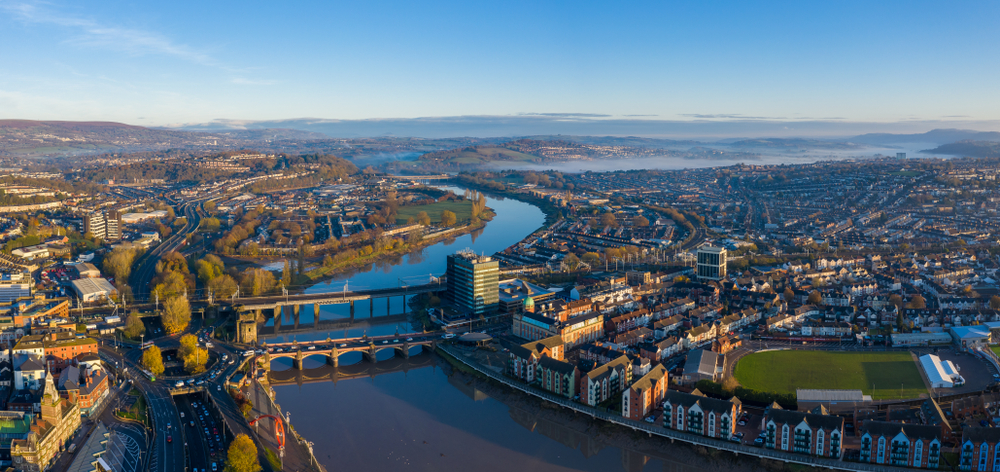
The third highest tide in the world can be found in the United Kingdom, specifically in the Bristol Channel. The channel is located at the northeastern corner of the Atlantic Ocean, connecting it to the UK’s River Severn via the Celtic Sea.
The Port of Avonmouth sees the channel’s highest tides, with the mean tidal range coming in at 31.5 feet (or 9.6 meters). Just like most of the other high tides on our list, geography plays a large part in the severe height of this tide. A shallow continental shelf located just outside of the Bristol Channel causes the Atlantic Ocean to swell, and with nowhere else to go, the water is emptied into the channel.
Unlike Ungava Bay, the Bristol Channel shows real possibility as a renewable energy site, and studies have been conducted about the feasibility of harnessing these high tides. While no final decision has been reached as of now, the possibilities for future development here look promising.
4. Cook Inlet, Alaska

Alaska’s 180-mile Cook Inlet is home to the fourth-highest tide in the world, specifically near the town of Sunrise. The Cook Inlet is located between the Gulf of Alaska and the city of Anchorage, and it’s one of the most visited watersheds in the entire state. The immense beauty combined with the high tidal range makes this a popular place to visit, and there are even several national parks located along Cook Inlet.
Sunrise is located at the northeastern end of the inlet, at the most inward end of the Turnagain Arm branch. Tidal activity is severe here due to the funneling effect of the geography, and the mean tidal range in this area is 30.3 feet (or 9.2 meters). While the Cook Inlet does extend all the way to Anchorage, the funneling effect there is not as intense as that of Sunrise, and the mean tidal range only reaches 26.2 feet (or 9.2 meters).
5. Río Gallegos, Argentina
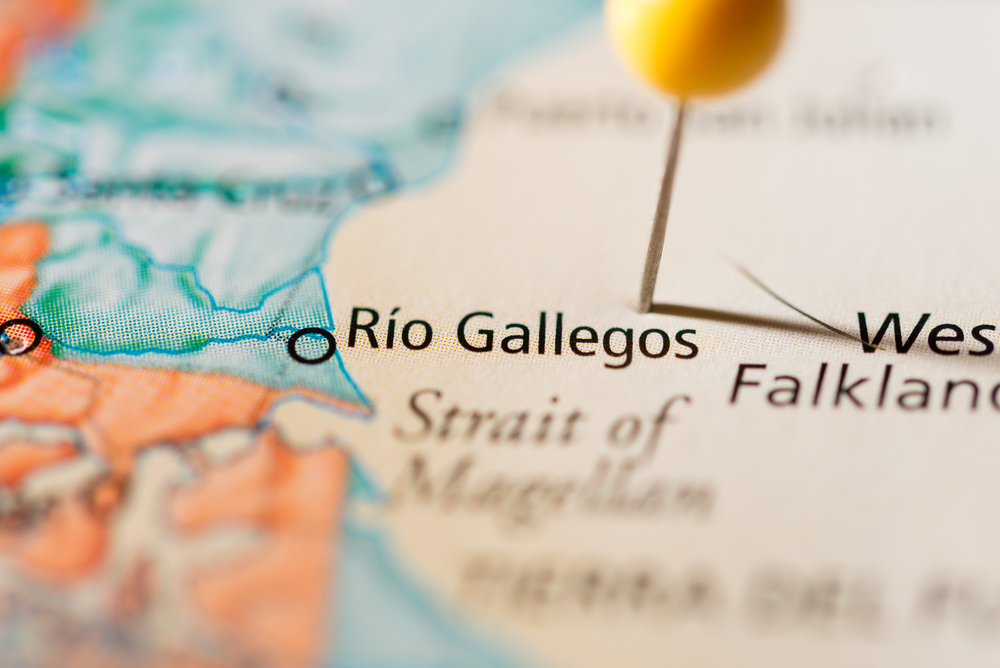
While some of the highest tides are found well above the equator, to locate the fifth-highest tide in the world you’ll need to head in the opposite direction, towards Argentina’s southern region of Patagonia.
Río Gallegos is one of the southernmost places in the world, and this river is fed by the South Atlantic Ocean. Just like the other high tides on our list, geography and topography play a huge part in the water movement of this area. As the ocean currents make their way west towards land, The water is funneled through the Río Gallegos. From there, the water has nowhere else to go, resulting in high tides that have a median range of 29 feet (or 8.8 meters).
Further south, the Strait of Magellan features a similar phenomenon, but the fact that this waterway is open at both ends allows the water to flow through into the Pacific Ocean and prevents the tidal activity from becoming as severe.

